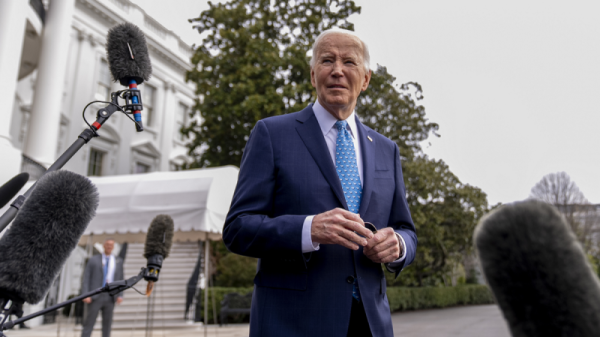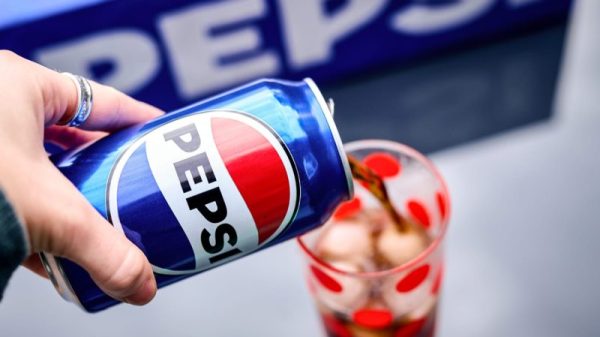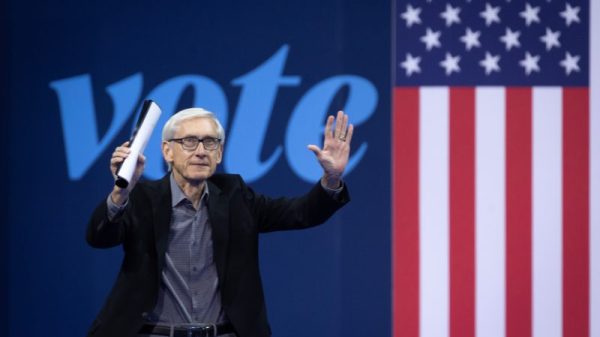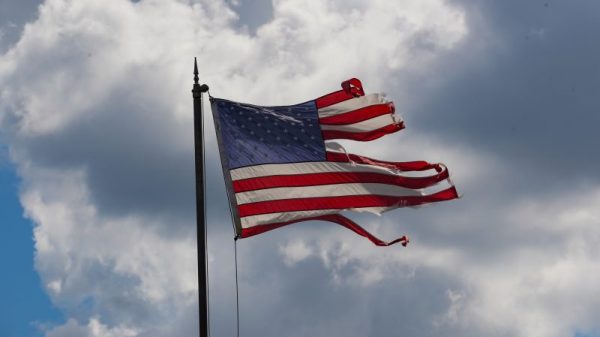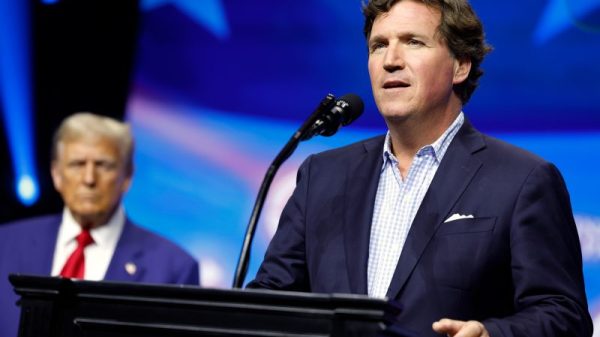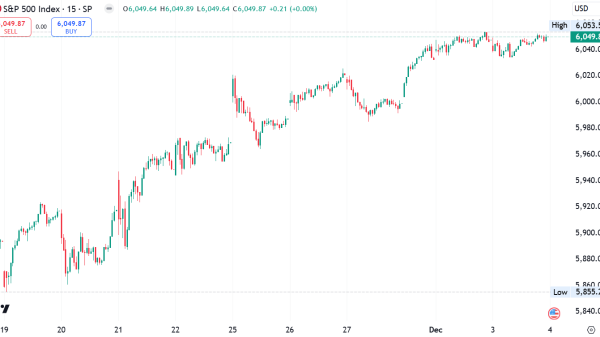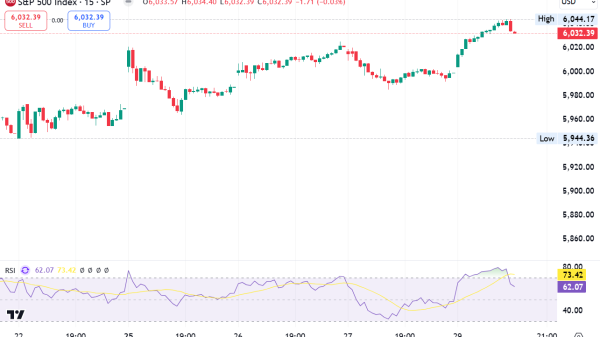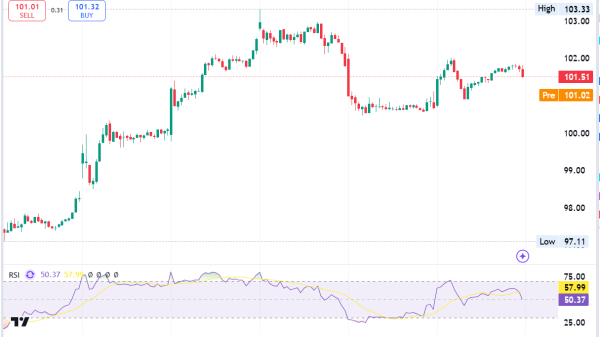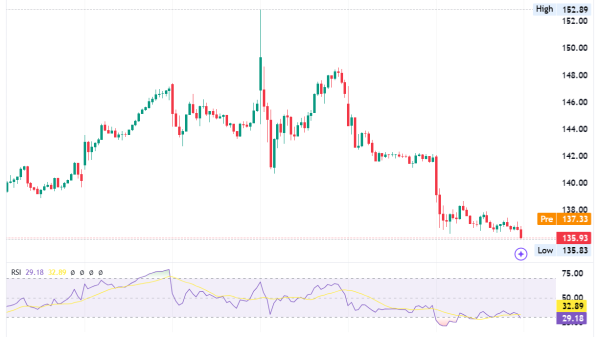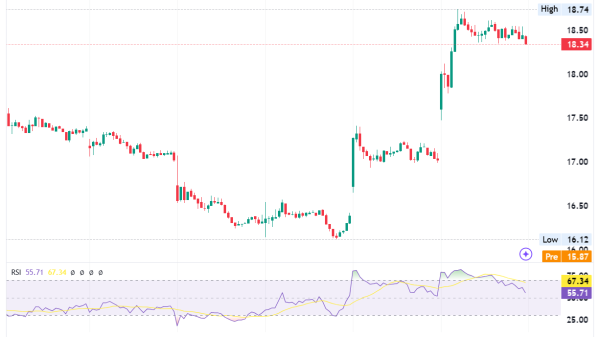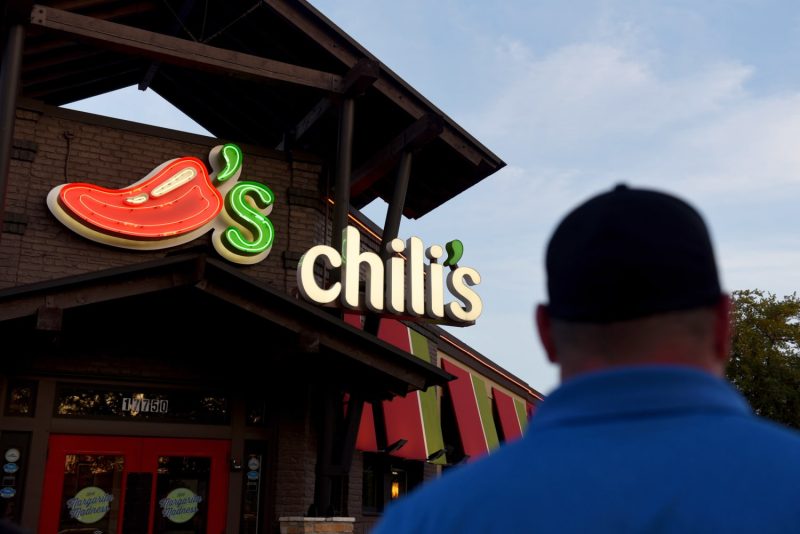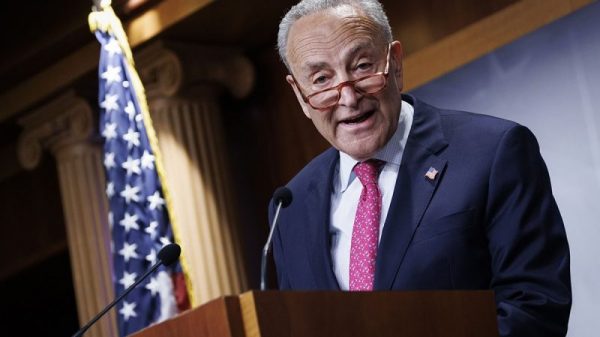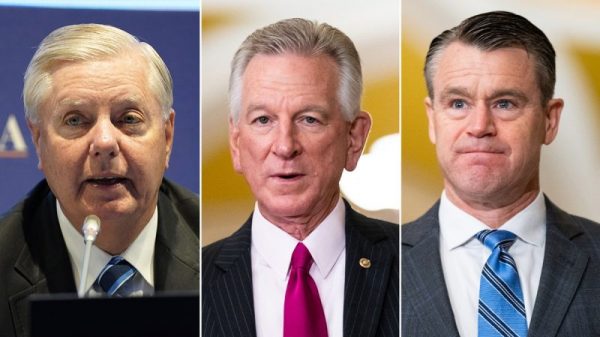A rocky year for restaurants separated the industry’s biggest chains into winners and losers, as eateries competed for a smaller pool of customers who have grown more discerning about how they spend their dollars.
“I’ve been eating out less this year — it tastes just as good, and it’s way cheaper,” said Jennifer Jennings, who works in sales in Tulsa, Oklahoma.
Prices for food away from home had risen 3.6% over the last 12 months as of November, according to the Labor Department’s consumer price index. Grocery prices climbed just 1.6% during the same time, making cooking at home more attractive than dining out.
In response, many consumers have cut their restaurant spending, leading to slower sales and greater competition. The value wars reignited this summer. Chains took aim at their rivals in marketing and social media posts. And restaurants ramped up innovation, hoping that new menu items could boost sluggish traffic trends.
“I think the common thread behind everything right now is that the chains that are winning aren’t standing still. They’re doing something innovative, whether that’s new menu items … maybe that’s a marketing innovation … maybe it’s just hyper-emphasizing value,” said RJ Hottovy, head of analytical research for Placer.ai.
The year started off slow, with declining year-over-year traffic in January and February, before visits picked up again in March, according to industry tracker Black Box Intelligence. But eateries struggled again over the summer as consumers tightened their belts. Even a slew of value meals that promised cheap burgers and fries couldn’t stem the tide.
As traffic has fallen, bankruptcy filings have soared. Twenty-six bars and restaurants have filed for Chapter 11 this year, just one shy of tripling 2020′s total during the pandemic, according to the Debtwire Restructuring Database. This year’s filers included big names like Red Lobster and TGI Fridays.
While traffic has improved into the fourth quarter, some industry experts say it’s too early to predict a full recovery. A Numerator survey of more than 2,000 consumers found that the majority — across all income groups — plan to maintain their current spending levels at limited-service restaurants in the coming months.
But the chains that are already winning have seen their gains grow in the fourth quarter, further fueling their success.
Here are the winners and losers of the restaurant industry in 2024:
Value became restaurant CEOs’ new favorite word this year as they sought to reverse falling sales and appeal to inflation-weary consumers.
McDonald’s rang the alarm for the industry in late April, warning that consumers have become more “discriminating.” Three months later, the company’s second-quarter sales missed estimates and foot traffic to its U.S. restaurants shrank. The burger giant responded by rolling out a $5 combo meal, and many of its rivals followed suit with their own discounts and deals.
Traffic tied to value menu deals climbed 9% through October compared with the year-ago period, according to Circana data.
But value meals alone won’t save the industry.
For one, the lift from the deals isn’t enough to offset overall traffic declines, according to David Portalatin, Circana senior vice president and industry advisor for food and food service.
Plus, “value” has come to mean more than just the price tag. It also includes the experience and quality.
“For the low-income consumer, it’s the dollar amount that matters. For everybody else, it’s value. Even if you have money, you’re noticing things are more expensive, and you’re going to be more selective,” Michael Zuccaro, Moody’s Ratings vice president of corporate finance, told CNBC.
Fast-food restaurants have been losing customers this year, as customers pull back their spending.
Despite a proliferation of $5 combo meals, traffic to quick-service restaurants fell almost 2% this year through October, according to Circana data. That’s bad news for the industry because fast food accounts for nearly two-thirds of overall restaurant visits.
Industry experts attribute the decline in fast-food traffic largely to low-income customers. Diners who make less than $40,000 account for more than a quarter of both McDonald’s and Taco Bell’s customer bases, based on Numerator data.
Many of those consumers have chosen to spend less at fast-food restaurants, whether it’s skipping the order of French fries or forgoing a visit altogether to cook at home.
“There’s a lot more competition with grocery and other food retailers,” Hottovy said. “That’s where most of the competition is, particularly for that lower- to middle-income consumer.”
The fast-food chains performing the best right now, like Yum Brands’ Taco Bell, have high value perception.
Typically, when consumers tighten their belts in an economic downturn or recession, fast-food restaurants benefit. Even as low-income consumers cut back, higher-income consumers trade down to fast-food combo meals. But that hasn’t happened this time as consumers who make more money have instead embraced a more holistic definition of value to decide where to spend their money. Those diners want a high-quality, satisfying meal more than they care about a deal.
The fast-food chains that performed the best in 2024 tended to focus on chicken: Chick-fil-A, Raising Cane’s and Wingstop.
Chicken prices have stayed relatively stable this year, while beef prices have climbed. Poultry also benefits because some consumers consider it a more healthy option than red meat, even when the chicken is breaded and fried.
Chicken has been gaining market share from beef since the chicken sandwich wars of 2019, and restaurants have been leaning into the shift in consumer behavior. McDonald’s, for example, recently added the Chicken Big Mac to its U.S. menu permanently.
Upstarts like Raising Cane’s have also been making a splash. The privately held chain, known for its chicken tenders, is the fourth-largest chicken chain in the U.S., with a market share of 7.8%, according to Barclays. The chain could soon overtake KFC, the rare chicken chain that’s struggled to resonate with U.S. consumers this year.
KFC, which is owned by Yum Brands, has fallen behind in recent years as competition has intensified. Rivals like Chick-fil-A and Popeyes have stolen market share with buzzy menu items and the consumer shift toward boneless chicken.
Those chicken chains are stealing market share from burgers. McDonald’s, Wendy’s and Restaurant Brands International’s Burger King all had lackluster years.
McDonald’s has long dominated the burger category, with 48.8% market share, according to Barclays. But the chain saw its grip slip earlier this year as it scared off low-income consumers with its menu prices. However, by October, things were looking up for the Golden Arches: its $5 value meal was winning back customers, and its pricier Chicken Big Mac was boosting traffic.
Then came a fatal E. Coli outbreak linked to the slivered onions used in its Quarter Pounders. While the company acted quickly to contain the fallout, sales tumbled, especially in the affected states. McDonald’s plans to chip in $165 million to help out franchisees and boost marketing efforts. The chain has also revived its popular McRib for a limited time and unveiled a new value menu that will launch in January.
Analysts are optimistic that McDonald’s will be able to put the incident behind it. Traffic turned positive in the week ended Dec. 8 for the first time since the Centers for Disease Control and Prevention announced the outbreak on Oct. 22, according to a note from Gordon Haskett Research Advisors.
For rivals Burger King and Wendy’s, that’s bad news.
Like McDonald’s, Burger King launched a $5 value meal over the summer to appeal to thrifty consumers. Its same-store sales fell in the third quarter, although Restaurant Brands CEO Josh Kobza said the business is much healthier than it was in September 2022, when the parent company formally launched Burger King’s U.S. turnaround strategy.
Likewise, Wendy’s has been struggling to gain a foothold in the value wars. The company recently announced that it would close 140 underperforming restaurants in the fourth quarter, in the hopes that culling its footprint would boost the overall business.
But a promotion tied to the 25th anniversary of Spongebob Squarepants has been a green shoot for the burger chain. Some locations even sold out of key ingredients for the “Krabby Patty” meal, according to an October note from Wolfe Research.
Taco Bell in Gastonia, N.C.Jeff Greenberg / Universal Images via Getty Images file
Taco Bell is another rare fast-food winner.
The Mexican-inspired chain was the only one of Yum Brands’ three holdings to report same-store sales growth every quarter so far this year. (Pizza Hut and KFC actually reported three straight quarters of same-store sales declines.)
Yum executives have attributed Taco Bell’s success to consumers’ perception of its value. It was the top limited-service chain that diners across all income groups considered to be more affordable than groceries, according to a Numerator survey of more than 2,000 consumers.
Yum has also credited Taco Bell’s “brand buzz.” Look no further than actress Selena Gomez’s Instagram post sharing her recent engagement, with Taco Bell’s Mexican Pizza prominently displayed on a picnic blanket; the brand’s PR chief said in a LinkedIn post that Taco Bell didn’t sponsor the post.
And the chain keeps moving. It’s rolling out artificial intelligence software to take drive-thru orders in hundreds of locations. And in early December, it unveiled a new drink-focused concept, called the Live Mas Café. The first location is being tested in San Diego.
As Taco Bell continues to stand out, Yum plans to highlight the brand in late January with an investor presentation outlining its strategy for next year.
Fast-casual restaurants are the only restaurant segment to report traffic growth this year.
Cava’s stock has skyrocketed 192% this year. Wingstop’s quarterly same-store sales have climbed more than 20% in every report it’s released this year. And traffic to Chipotle’s restaurants keeps growing, despite online backlash over its portion sizes and the departure of longtime CEO Brian Niccol in September.
But it isn’t just those chains. Broadly, the fast-casual restaurant segment has seen traffic rise 3% through October compared with the year-ago period, according to Circana data. And dollar sales have increased 8% for the category.
“You spend more money by going out rather than staying in, and fast casual seems to strike the right balance of the value equation,” said Circana’s Portalatin.
Chipotle and its fellow fast-casual chains also benefit from a customer base that skews higher-income. Chipotle executives have previously said that they haven’t seen the same traffic reversals as the rest of the industry because the chain’s customers have more money to spend on eating out.
Of course, there were a few losers even in the fast-casual category. Chains like BurgerFi and Roti filed for Chapter 11 bankruptcy as their traffic fell and costs rose.
“Maybe they expanded too quickly and had other issues, and so they got into trouble,” John Bringardner, head of Debtwire.
A woman walks by a Starbucks in New York City, on April 4, 2022.Spencer Platt / Getty Images file
Niccol shocked the restaurant world in August when Starbucks announced he’d be taking over as chief executive, following his predecessor’s ouster. Chipotle’s stock fell and Starbucks shares soared on the news in a combined market cap swing of $27 billion, showing Wall Street’s belief in Niccol as a leader.
Niccol’s departure from Chipotle came six years into his tenure. He ushered the burrito chain firmly out of its foodborne illness crisis, leaned into online ordering, modernized its locations for the digital age and led the company through the pandemic. Wall Street analysts expect that his replacement, Scott Boatwright, will stay the course set by Niccol.
On the other hand, Niccol’s appointment at Starbucks will likely mean big changes for the coffee giant. The board hired him after two consecutive quarters of same-store sales declines. Customers had become fed up with its high prices and chaotic, unwelcoming stores, and even discounts and new drink launches couldn’t persuade them to return.
As CEO, Niccol has pledged to bring the company “Back to Starbucks.” In late October, he shared early thoughts to reshape the U.S. business, from small tweaks like bringing back Sharpies to much more ambitious plans, like cutting back its extensive drinks menu.
Heading into 2025, Wall Street is excited about his proposals. Piper Sandler ranked Starbucks as its best idea for restaurants that it covers. BTIG also named it as a top pick, alongside Wingstop.
Traffic to casual-dining restaurants has fallen 2% year-to-date through October, according to Circana data.
This year’s decline in visits follows years of waning demand for casual-dining chains. They’ve struggled to compete since the Great Recession, which brought the dawn of fast-casual options that offer high-quality food at cheaper prices with greater convenience.
Some consumers are also skipping casual-dining chains and instead frequenting local independents.
The segment’s biggest losers this year were Red Lobster and TGI Fridays, which both filed for Chapter 11 bankruptcy. Red Lobster, which filed in May, has since exited bankruptcy with a new owner, leadership and strategy to turn around the business.
“You’re seeing some weeding out … of those concepts that are a little tired, a little under pressure,” Circana’s Portalatin said.
Other casual-dining chains that are struggling to win over customers include Applebee’s, owned by Dine Brands.
Still the category has some outliers, like Texas Roadhouse, Chili’s and Olive Garden. Their relative outperformance has boosted the segment’s metrics, hiding some chains’ deeper deterioration. (Olive Garden parent Darden Restaurants reports its latest quarterly results on Thursday.)
While casual restaurants struggle, one bright spot was Chili’s, owned by Brinker International. A table at the chain more associated with families became a hot reservation among Gen Z diners.
The bar and grill’s turnaround finally took hold this year, boosted by sharp advertising and TikTok-viral deals. In its latest quarter, Chili’s reported same-store sales growth of 14.1%, fueled by a 6.5% increase in traffic.
The chain’s “3 for Me” bundle, priced at $10.99, appealed to consumers looking for value. Plus, Chili’s advertised the promotion by taking aim at the prices of its fast-food rivals. And its Triple Dipper combo, which offers three appetizers, took off on TikTok, causing sales of the menu item to soar more than 70% in its latest quarter compared with last year. The Triple Dipper now accounts for 11% of the chain’s business, Brinker CEO Kevin Hochman said on the company’s latest earnings call on Oct. 30.
Chili’s success has spawned copycats. Rival Applebee’s recently picked a fight with Chili’s over its competing $9.99 value meal. And Olive Garden reintroduced its Never Ending Pasta Bowl promotion.
In mid-November, restaurant executives were feeling optimistic about 2025 at the Restaurant Finance and Development Conference in Las Vegas.
Circana’s Portalin echoed that sentiment, predicting that inflation will keep declining next year, bringing some much-needed stability to prices and the overall industry.
“Think about everything consumers have dealt with over the last year: natural disasters, global conflict, the polarizing national election,” he said. “If we could get all of that in the rear view mirror, and if we can maintain some of these basic fundamentals around income and labor, we think customer traffic will improve in 2025.”
But not everyone in the industry is so sure that 2025 will bring a restaurant recovery.
“I think we’re going to continue the same mindset that we’re leaving 2024 with, this value-oriented, deal-driven consumer,” Placer.ai’s Hottovy said.
Likewise, Moody’s outlook for the restaurant industry predicts modest sales growth, but Moody’s Zuccaro said companies will all be fighting for their share.
In other words, the value wars won’t slow down — and may even intensify.




